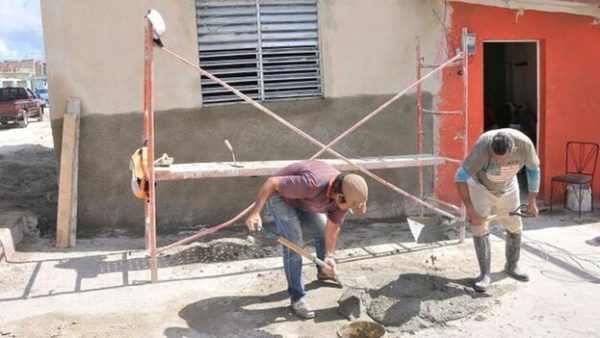Resurrecting Microbrigades to Solve Cuba’s Housing Problem?
Ramiro Valdez’s plan to address the island’s housing problem

“I can’t be everywhere,” the 90-year-old commander complained
HAVANA TIMES – Ramiro Valdes, who turns 91 next week, got angry during a meeting with leaders of Santiago de Cuba last week over the terrible state of housing in the province. The commander, ratified this Wednesday as Deputy Prime Minister, “pounded the table,” according to the local official newspaper, after unraveling the problems of the sector: overcrowding, building collapses, precarious buildings and illegal trafficking of materials.
“I can’t be everywhere,” complained Valdes, whose speeches and interventions do not usually appear in the official press. He called on inspectors and managers to carry out greater vigilance of the situation.
Valdes took advantage of the meeting, of which only a summary was published in the official media this week, to blame those who sell construction materials at outrageous prices and also those who build “majestic houses.”
“It can’t be that a few build houses” and others neglect control of the market and then “nothing happens,” he said. Freeing the government, in power for 63 years, from all responsibility, he pointed out that the State “creates” the housing plan, but that local management has not been up to the task. “If we don’t check and we allow the embezzlers to divert what little we have, the problem will continue,” he added.
The deputy prime minister said that they shouldn’t be lax with those who violate urban regulations either. The so-called llega y pon [“arrive and put down” makeshift housing] slums abound in the cities, towns and communities of Santiago de Cuba, triggering “new problems” that are “avoidable if the established way is done,” he added.
Santiago de Cuba is only a part of the extensive picture that shows the extremely precarious conditions of housing throughout Cuba: In the province there are 4,766 properties with dirt floors; 7,312 have been affected by climatic events; and the existence of 1,013 tenements has been confirmed.
Sierra Maestra newspaper describes the problem as the “’way of the cross’ of construction” and cites concrete examples of families who “take risks” to improve their housing conditions. Such is the case of Orlando, who since 2016 has been waiting for a state subsidy to get materials, or Mayte, who complains about her “mistreatment” by the authorities. The case of Sandy and Juan is also mentioned, two Cubans who have been trying for ever to get a sack of cement in the informal market, which now costs 2,000 pesos [US $17], nearly a month’s wage for many workers.
These “complaints” had bothered Valdés, who recalled that, in 1953, Fidel Castro promised to resolve the “housing tragedy.” Seventy years after those words, the official insists that housing conditions have been improved with the construction and delivery, since then, of 3,824,861 homes throughout the Island.
In addition, he insisted that it is time to resurrect the state microbrigade movement created by Castro in 1971, based on the idea of homeless workers building their own homes. The Government allocated land and supplied the materials, but eventually there were non-compliances and, as of 1990, the plan was scrapped.
Most of the buildings built under the concept of microbrigades were built in the years when the large Soviet subsidy allowed the Cuban state to pay for these projects. Many of the multi-family apartment buildings of that period, with architectural models from Eastern Europe, have been harshly criticized for their ugly aesthetics and the little integration with the climate on the Island.
While the decisions remain on the table, thousands of Cuban families will take refuge this winter in makeshift houses or dark and poorly ventilated quarters. One of the problems that adds to the list is the shortage of cement, which stifles not only the housing sector but the entire economy, because it does not allow progress in the construction of key projects for the country’s industries.
Translated by Regina Anavy for Translating Cuba





